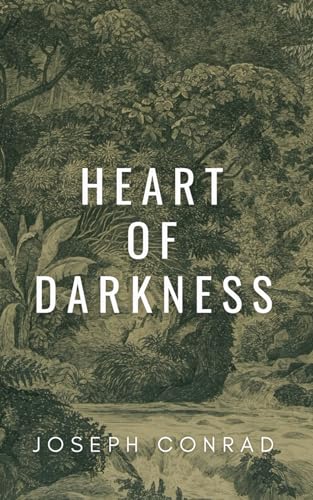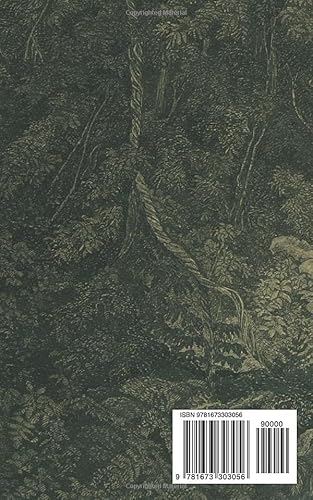Welcome to my review of Heart of Darkness, a tale that delves deep into the murky waters of colonialism, human nature, and symbolism. Through the eyes of Marlow and the madness of Kurtz, Conrad lays bare the grim realities of the human soul against the backdrop of the Congo River. Whether you are drawn to the dark side of humanity or fond of rich, vivid imagery, this book has something to offer. But don’t think it’s all smooth sailing; there are choppy waters ahead in this review!
In a Nutshell
Heart of Darkness by Joseph Conrad is a classic novella that falls under the genres of adventure and psychological fiction. The story follows Charles Marlow, a seasoned sailor, who narrates his journey up the Congo River in Africa. Through Marlow’s eyes, Conrad delves into heavy themes like the grim reality of colonialism, the exploration of human nature, and the use of rich symbolism and imagery to drive home his points. If you enjoy deep, haunting reads that make you think about humanity’s dark side, this book is definitely for you.
Themes of Colonialism and Exploitation in Heart of Darkness
Joseph Conrad’s ‘Heart of Darkness’ shines a harsh light on the dark side of colonialism. This book drags you through the mud, showing the grim reality of empire-building. When Marlow, our storytelling sailor, steers his steamboat up the Congo River, he’s not just navigating water. He’s diving headfirst into the exploitation party of the century.
I recall reading this book while stuck in jury duty. Let me tell you, Conrad’s depiction of colonialism made those courtroom dramas feel like kid’s stuff. The Europeans in the book are not there for some cultural exchange. They’re there to plunder, taking everything they can get their hands on. Ivory, rubber, and even the dignity of the local people.
The most chilling character has to be Kurtz. Oh boy, Kurtz! This guy is like a colonizer on steroids. He’s the big cheese of exploitation, setting himself up as a god among the locals. His descent into madness shows how colonialism corrupts everyone involved, colonizers and colonized alike. Marlow’s journey to find Kurtz is not just a trip through the jungle, it’s a journey into the rot at the heart of the colonial project.
I’ve got to admit, the prose can be thick like my grandma’s gravy, but the message punches through. Conrad doesn’t hold back in showing that colonialism is not a grand adventure. It’s a brutal business. The exploitation of resources and people goes hand in hand, like peanut butter and jelly, but way more depressing.
Get ready, folks, because next up we’re digging into ‘Heart of Darkness’ exploration of human nature. It’s gonna be wild!
Understanding Human Nature in Heart of Darkness
Ever wonder what lies at the core of human nature? Well, Joseph Conrad’s Heart of Darkness doesn’t just poke it with a stick – it crams it under a microscope and zooms in. Marlow’s journey up the Congo River isn’t just a voyage through uncharted lands; it’s like peeking into the murkiest corners of the human soul.
Now, Marlow is no ordinary bloke. He’s seen stuff that would make anyone gulp their coffee nervously. As he travels deeper into the jungle, he finds himself also traveling into the depths of the human psyche. The line between civilized and savage starts to blur, and suddenly, those polite dinner conversations back in Europe seem like a far-off dream. I remember reading this and thinking, ‘Blimey, is my neighbor secretly a Kurtz?’ Spoiler: I did check his attic just to be sure.
Speaking of Kurtz, he’s like that final, terrifying boss in a video game. He represents what happens when the restraints of society snap. Stripped of civilization, he’s gone off the deep end. It’s like someone gave him a map to moral decay and he followed it to the letter. The guy who once wrote eloquent reports becomes a madman ruling over tribes with an iron fist. Talk about a character arc!
The book makes you question if there’s a dark side lurking within us all. Are we all just one bad day away from turning into Kurtz? It’s a thought-provoking and, frankly, kinda scary journey that makes you reflect long after you’ve turned the last page.
Next up, we’re tackling the haunting and vivid symbolism and imagery in Heart of Darkness. Grab your flashlight, it’s about to get metaphorically dark!
Symbolism and Imagery in ‘Heart of Darkness’
Let’s talk symbols and imagery, folks. Joseph Conrad’s Heart of Darkness is packed with goodies. The book’s title itself is the biggest symbol. It’s not just about Africa; it’s about the dark places in human hearts and minds. See what he did there?
The mighty Congo River is another biggie. It’s not just a river, it’s a metaphor for Marlow’s journey into the unknown and the murky depths of human soul. Imagine going to the grocery store and finding a haunted house along the way – that’s Marlow for you.
Then there’s the jungle. It’s thick, wild, and mysterious. It represents nature’s chaotic power and how it can engulf men. Have you ever tried to find your way through an overgrown garden? Now, multiply that by a thousand, add creepy noises, and you’re almost there.
Oh, and Kurtz’s painting. Picture this: a blindfolded woman carrying a torch. She’s a symbol of Europe’s intentions in Africa. They say they’re there to bring light, but, let’s be honest, they’re just stumbling around in the dark, making a mess.
We can’t ignore the heads on stakes around Kurtz’s station either. It’s not a pleasant garden decoration choice. It symbolizes Kurtz’s madness and the extreme reach of imperial power. Imagine having a neighbor with a very questionable sense of yard decor – only a hundred times worse.
From the fog to the shadows, Conrad uses imagery to create a chilling atmosphere that makes you want to leave the lights on. The next section will shed light on character development and interactions, unveiling the layers within these complex personas. Buckle up!
Character Development and Interactions in Heart of Darkness
In Heart of Darkness, Joseph Conrad presents a cast of characters who reveal the raw edges of human nature through their interactions. The protagonist, Marlow, starts off as a curious and somewhat naive sailor but undergoes significant transformation. Through his journey up the Congo River, he witnesses the moral decay and corruption that colonialism brings. Marlow’s growth is gradual and subtle; he’s not the same man at the end of the book.
Then there’s Kurtz. Ah, Kurtz! He is the enigma, the man who’s gone off the deep end. His transformation from a once-respected ivory trader to a demigod-like figure among the natives is both fascinating and terrifying. Kurtz’s madness reflects the dark heart of humanity when left unchecked by law or conscience. His final words, “The horror! The horror!” leave a lasting impression on both Marlow and the reader.
Interactions between characters in Heart of Darkness are often laced with tension and mistrust. Marlow’s conversations with Kurtz’s fiancée, the manager, and the pilgrims reveal different facets of European arrogance and ignorance. There’s a sense that everyone is wearing a mask, hiding their true intentions.
Even the brief moments of camaraderie on the steamboat feel strained, like a rope on the verge of snapping. Conrad’s writing brings these interactions to life, making you feel the unease and suspense.
If you’re up for a deep read that will haunt you long after you’ve finished, I recommend Heart of Darkness. It’s a wild ride, but worth it.
Conclusion
So, there you have it, folks! Heart of Darkness is a wild ride through colonialism, human nature, and symbolism. Conrad’s masterful storytelling keeps you hooked, even if some parts feel heavy. If you’re into deep, haunting tales, this is a must-read. Just be prepared for some dark and grim moments. That’s it for this review, see you next time!



